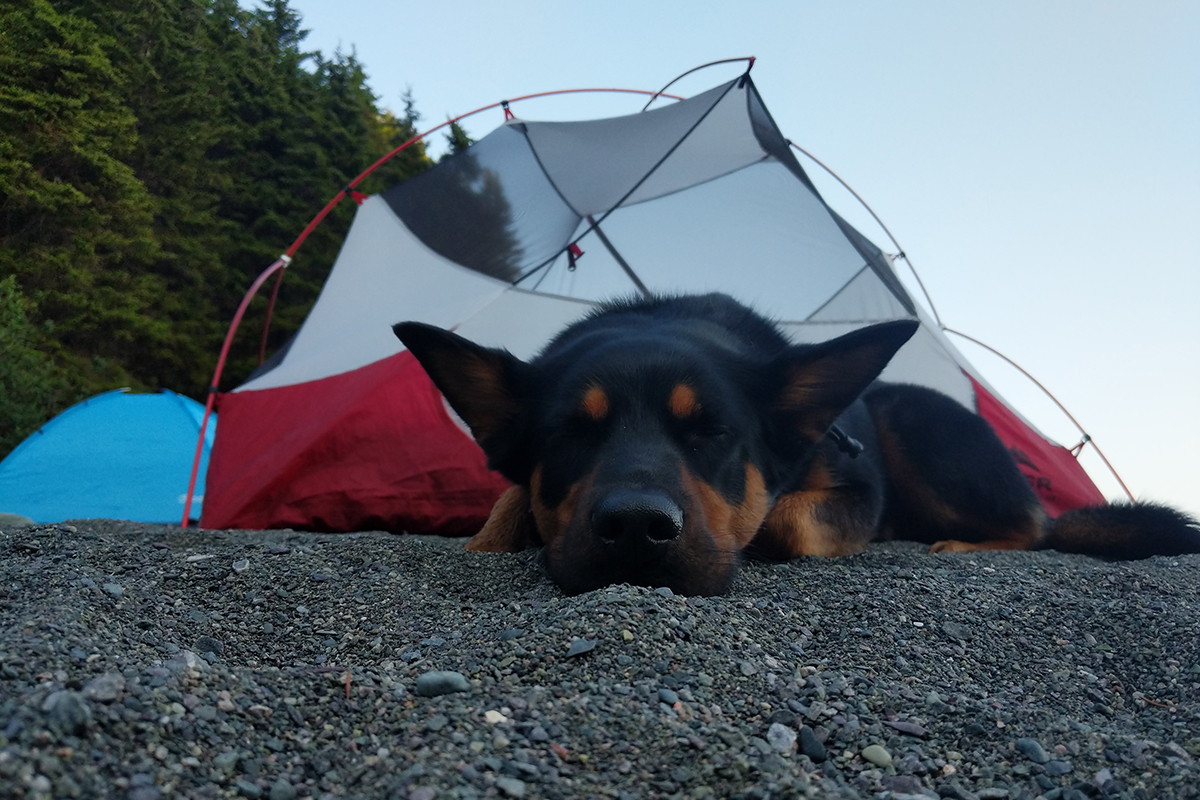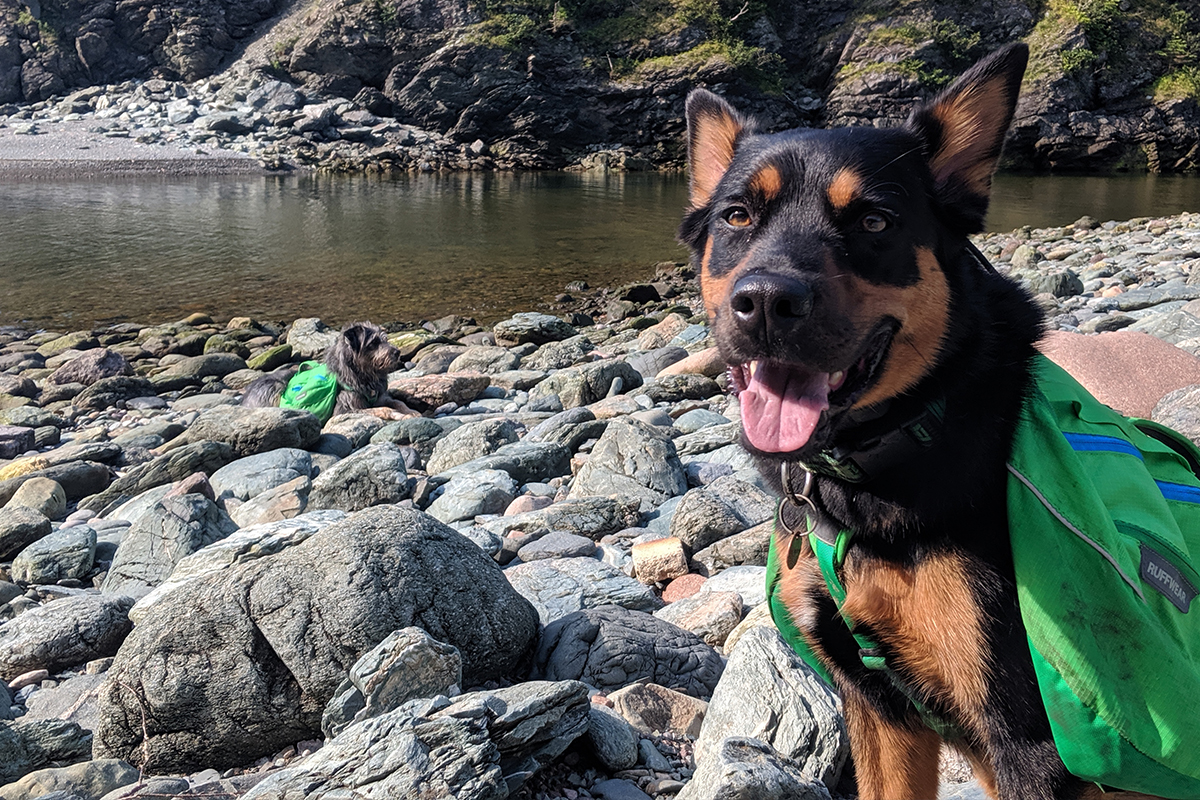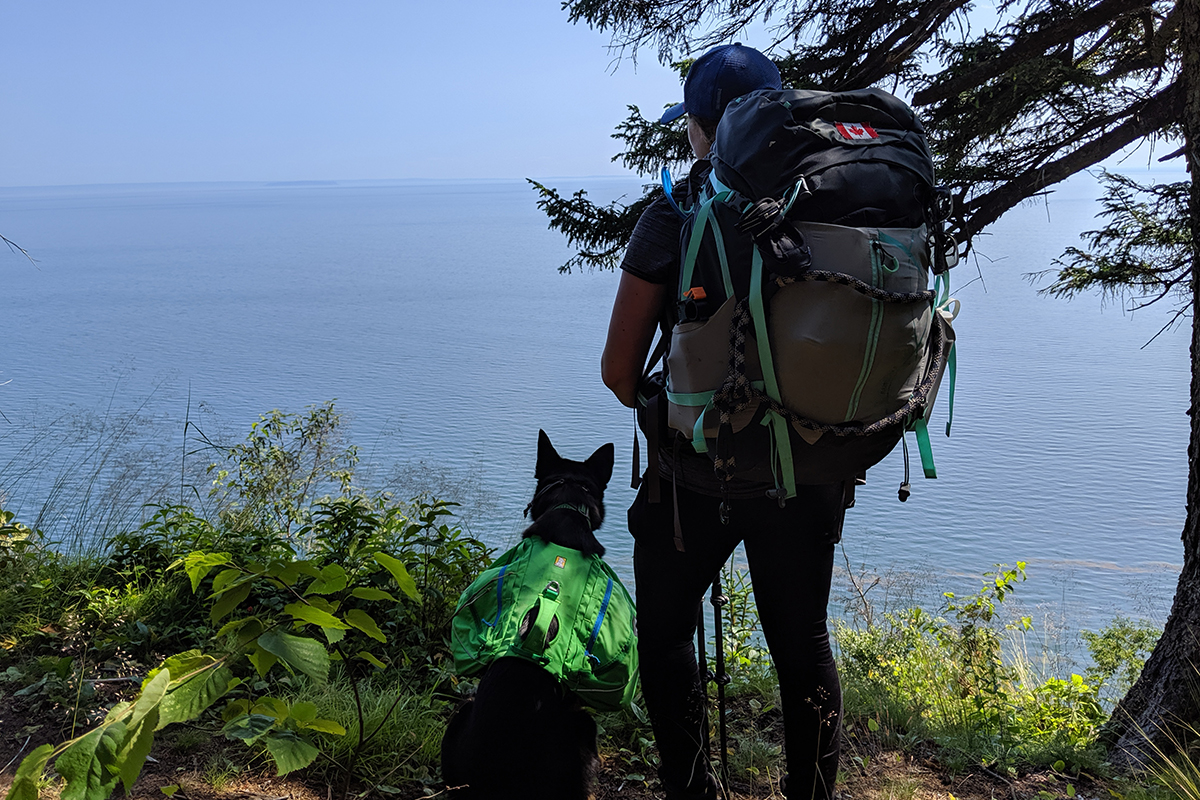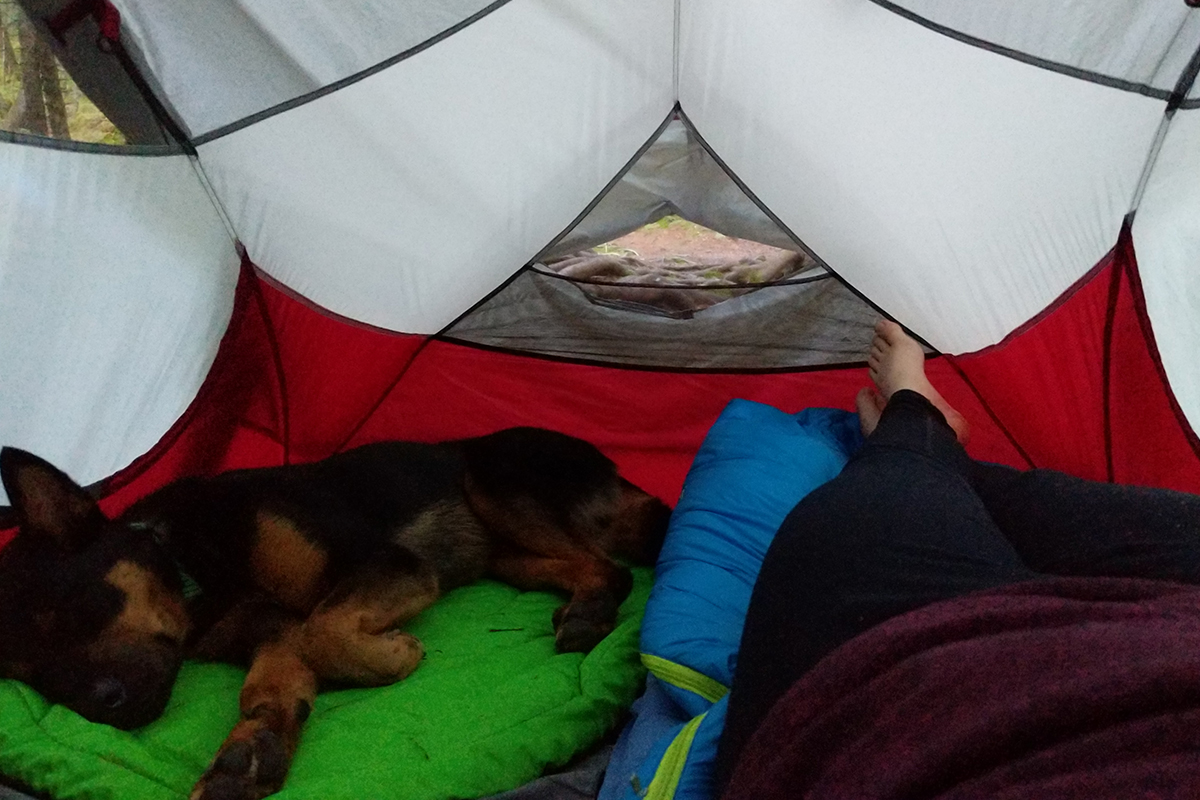Multi-Day Hiking with Your Dog
Posted by Kirsten on 2020 Mar 28th
In this post, we are covering some tips specific to backpacking and doing a multi-day hike with your dog. For more general tips on hiking with your dog, check out Hiking with Your Dog.
Most dogs love to hike but not all dogs are cut out for a multi-day hike. If you are planning to backpack with your dog, here are some tips for determining whether or not your dog is up for it and if they are, how to make it a successful and enjoyable experience for both of you.
PRACTICE MAKES PERFECT (KIND OF)
Ease into a multi-day hike by training ahead of time. Leading up to your hike, it is important to build up your dog’s stamina (as well as your own) by taking them on increasingly longer hikes with similar terrain that you expect on your full hike.
Assess how your dog is doing during and after a hike, and let that determine whether or not you can go longer next time. Some things to look for are:
- Energy: Do they stop and lie down during a hike? Do they want to keep going at the end of the hike?
- Stress levels: Are they panting a lot (not due to physical exertion)? Is there anything that makes them nervous (i.e. other hikers)?
- Soreness/limping: During and after a hike, are they limping or sore to the touch anywhere? Some dogs show they are in pain immediately while others work through the pain which means they often don't show signs of soreness until later.
- Paw pads: Any scrapes or tears during or after a hike?
The same goes for sleeping on the trail. If your dog has not camped before, make sure they get a chance to sleep in a tent with you at least a couple of times first. The very first time I took my dog camping, he was not a happy camper. He didn’t understand what we were doing and he put his paw through my tent wall trying to find an escape. I was fortunate to have a cheap tent at the time and some duct tape on hand for a quick patch job. By the second night, he was the perfect camper so I knew a multi-day hike was possible for us.

Odis having a post-supper nap at Rose Brook during our Fundy Footpath hike.
TAKE YOUR TIME
Whether you have an older dog that rests willingly or a younger dog that doesn’t know how to relax, plan to stop often. Ultimately, your dog's health and safety comes first so making sure they aren’t overexerting themselves is key. Keep in mind that anytime you feel tired, hungry or thirsty, your dog probably feels that way as well.

Gus (back) was willing to rest at Wolfe Brook but Odis (front) had to be encouraged to sit.
EXTRA FOOD & A HEAVY PACK
Anyone who has done a long hike can tell you that every ounce of weight makes a difference. The goal is to keep your pack as light as possible but you can not compromise when it comes to your dog’s nutrition. They will need more food than a typical day. Consult your veterinarian for specific requirements. Even if they are wearing a pack and can help to carry the load, there may come a time when you have to carry everything. After a couple days of hiking the Fundy Footpath, I discovered my pup was getting a chafed area under his arm so I clipped his pack to mine for the rest of the hike.
In addition to more calories, they also need more water than normal and it’s best to give them filtered water, to keep them safe and hydrated. My dog is happy to drink from any poured water, whether it’s out of a bottle or my hydration pack but some dogs are more apt to drink from a bowl.

Odis and Kirsten enjoying the view of the Atlantic Ocean from the trail.
GEAR FOR YOU & YOUR DOG
The Dog Pack: A properly fitted dog pack with a handle on their back is ideal. This way they can carry some food or light gear, and you can easily grab them anytime. How much weight your dog can safely carry will vary. If your dog is a young, healthy and energetic dog, then can likely carry up to 25% of their bodyweight. I prefer to stay below that just in case. Just like with anything else, take time for your dog to get accustomed to the pack to ensure they will be happy to hike with it for a few days.
The Leash: If you must keep your dog leashed, a bungee leash can make the hike much more comfortable for both of you.
Paw Balm: Every dog will be different but mine is infamous for scraping his pads. The best thing I have found to work is high quality paw balm that I apply every morning and throughout the day as needed.
Sleeping Pad: When things cool off at night, your dog will feel the cold. Make sure he is clean and dry before bed and have a sleeping pad for him to stay warm.
Light: I have a small light for my dog's collar that is remote controlled so I can easily turn it off and on. I have found this to be very helpful since he is usually right in front of me and it helps to illuminate the trail in the event we are hiking in the dark. It is also helpful for them to have a light when you are at camp. Even though my dog is usually sleeping close by, he is mostly black and can blend in with our surroundings. The light gives me peace of mind that I can easily see him at all times.

Bedtime Cradle Brook, along the Fundy Footpath, in the MSR Hubba Hubba 2-person tent.
IN SUMMARY
As with any hike, research the trail ahead of time to ensure you are well prepared. When you know what to expect and are equipped with the proper gear and food, you will certainly have an incredible time hiking with your dog.

